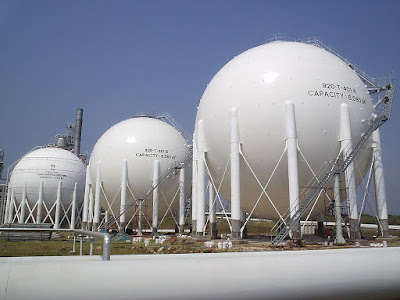TYPE OF PRESSURE VESSEL
TYPE OF PRESSURE VESSEL
In business there's 2 main sort of pressure vessel gift typically
CYLINDRICAL PRESSURE VESSEL
SPHERICAL PRESSURE VESSEL
Some other kinds of vessels are out there like Reactors, Distillation Column, Packed Tower etc. these names area unit given in line with their use solely.
CYLINDRICAL PRESSURE VESSEL
Based on the form (cylinder) of the vessels, they're known as as cylindrical pressure vessel. they're additional classified into 2 sorts,
Horizontal Pressure Vessels
Vertical Pressure Vessels
When the orientation of the vessel is horizontal, that's horizontal pressure vessel. If it's vertical, that's horizontal pressure vessel.
Advantagesocylindrical pressure vessels:
it's easier to fabricate.
they're most likely cheaper to construct
They pack additional expeditiously into rectangular structures like boxes and buildings.
SPHERICAL PRESSURE VESSEL
Based on the form (spherical) of the vessels, they're known as as spherical pressure vessel
Advantage of spherical pressure vessels:
For a similar internal style pressure, a spherical vessel would require solely 0.5 the wall thickness as a cylindrical vessel.
Spherical vessels have the advantage of holding the most important volume per unit area of the instrumentation.
Note : Pressure vessels have the pressure fenced in by a head that has the pressure engaged on the within of the pinnacle. There area unit variety of various kinds of heads that may be used:
spheroidal
Tori spherical
sub figure
Conical
Tori conical
Uses of Pressure Vessel
Pressure vessels area unit employed in a spread of applications in each business and also the non-public sector. they seem in these sectors as industrial compressed gas receivers and domestic predicament storage tanks. alternative samples of pressure vessels area unit diving cylinders, decompression chambers, distillation towers, autoclaves, and lots of alternative vessels in mining operations, oil refineries and organic compound plants, reactor vessels, submarine and house ship habitats, gas reservoirs, hydraulic reservoirs stressed, rail vehicle air brake reservoirs, road vehicle air brake reservoirs, and storage vessels for liquefied gases like ammonia, chlorine, propane, gas and LPG.












No comments